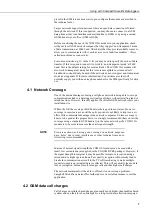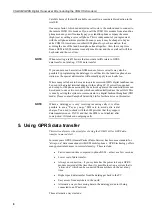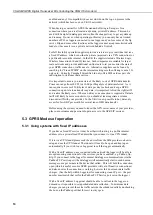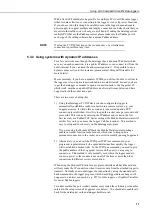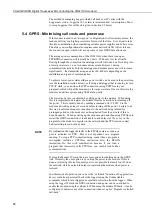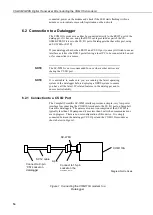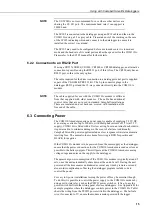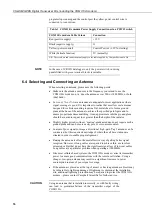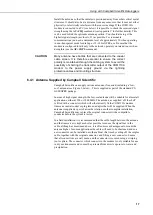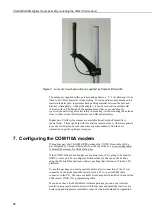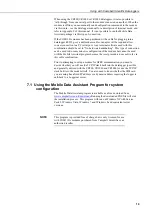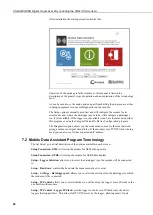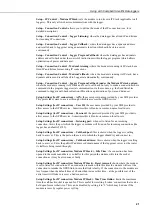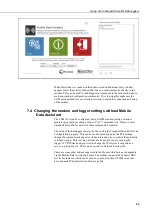
CS-GSM/GPRS Digital Transceiver Kits (including the COM110A modem)
8
Careful choice of the tariffs available can result in a considerable reduction in the
total bill.
One major factor, which can determine call costs, is the method used to connect to
the remote COM110A modem. If you call the COM110A modem from a landline
phone modem, you will normally pay your landline phone company the same
(high) cost as calling a voice cellphone. This is independent of your agreement
with the cellphone airtime provider. In many cases it may be cheaper to buy an
extra COM110A modem or another GSM phone for your base station, thus
avoiding the use of the land-based phone line altogether. Also, the set-up time
from a GSM to GSM modem is usually much lower and the overall call will thus
be shorter and thus cost less.
When selecting a tariff beware that most data tariffs relate to GPRS
data transfer, not dial-up, C.S.D. data transfer.
If you cannot use a base station GSM modem, lower cost calls may also be
possible by programming the datalogger to call back to the land-line phone base
station, as the special airtime rates will normally apply to such calls too.
Where many calls have to be made in quick succession ISDN digital landlines can
be used with a digital terminal adaptor in the calling PC. If correctly supported
and set-up for the phone account by the network operator, the connection time can
be reduced to one or two seconds which can substantially reduce the call bill. This
is done by setting the system to communicate in a digital fashion throughout (UDI
mode). Please contact Campbell Scientific Ltd for further advice on this matter.
Where a datalogger is only receiving incoming calls it is often
possible to use a “Pay as you go” SIM card to avoid extra rental
charges. You need to check with the SIM provider that they support
data transmission on PAYG and that the SIM is not disabled after
some period, if it makes no outgoing calls.
5.
Using GPRS data transfer
This section discusses the principles of using the COM110A for GPRS data
transfer in more detail.
In recent years GPRS (General Packet Radio Service) has become a standard for
“always-on” data connections with GSM mobile phones. GPRS technology offers
many potential advances in remote telemetry. These include:
Fast connection time compared to phone/GSM – as fast as a few seconds
Lower cost of data transfer
Always on connection – if your system has the power to keep a GPRS
modem powered all the time then it is possible to set-up a system that is
“always-on” which can be connected from anywhere on the net at any
time
Higher speed data transfer from the datalogger back to the PC
Easy access from anywhere in the world
Alternative ways of accessing data in the datalogger due to it being
connected to an IP network.
Those alternative ways include:
NOTE
NOTE
Summary of Contents for COM110A
Page 2: ......
Page 4: ......
Page 6: ......
Page 10: ......
Page 48: ...CS GSM GPRS Digital Transceiver Kits including the COM110A modem 38...
Page 54: ......
Page 60: ......
Page 66: ......
Page 68: ...CS GSM GPRS Digital Transceiver Kits including the COM110A modem D 2...
Page 72: ......
Page 75: ......














